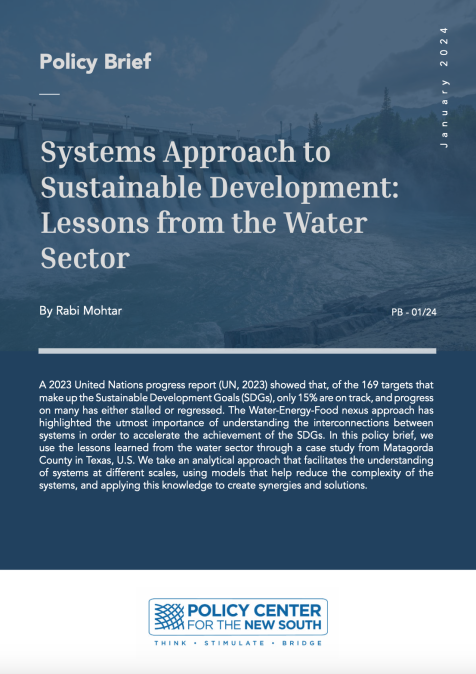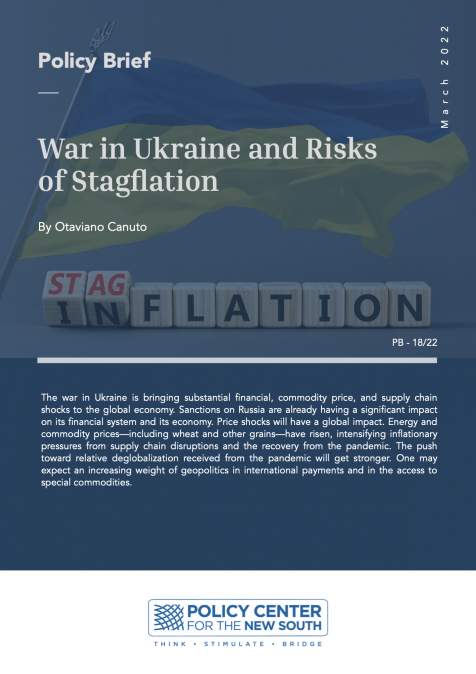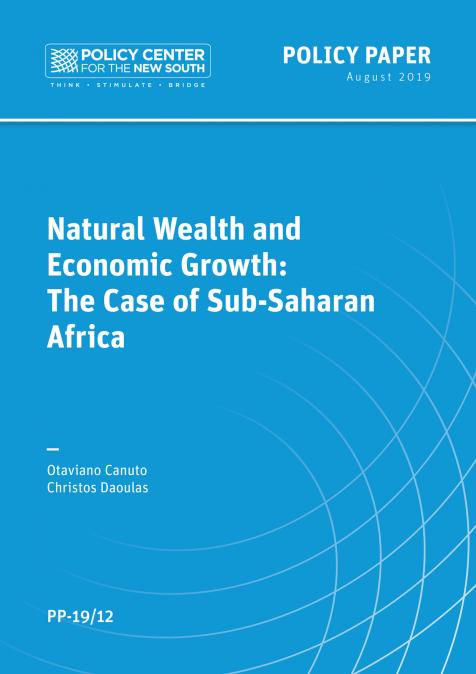Publications /
Opinion
The author of this blog, Ahmed Rachid El Khattabi, is an alumnus of the 2018 Atlantic Dialogues Emerging Leaders program
Rapid urbanization and climate change are two of the biggest challenges for cities. As much of the world is urbanizing, cities are growing thirstier, constantly seeking out new water supplies to keep up with demand. These challenges are especially significant for many growing cities that, due to historical reasons, are not located near water resources. Climate change is further complicating the pressures of urbanization by increasing uncertainty in the renewability of water resources. These two factors together have meant that the costs of securing water resources are rising.
These aren’t the only costs that are increasing. Municipal systems have to upgrade, expand, or install necessary infrastructure to transport—sometimes across long distances—and store water in order to accommodate increased growth. This growth has usually resulted in sprawl, increasing the costs of distribution. As more customers get connected to the water distribution network, however, it is not uncommon for these customers not to be connected to sewer networks. The waste from these customers along with unregulated industrial pollutants from increased economic development often contaminate groundwater sources and surface water sources, imposing higher costs of treating water and long-run public health concerns.
Expanding infrastructure to increase water storage or to facilitate inter-basin transfers makes sense in areas where infrastructure is lacking. These investments, however, have diminishing returns, not to mention high investment costs and potentially adverse environmental impacts. More importantly, they are not sufficient to keep up with demand. Studies using satellite imagery to study the world’s 500,000 dams revealed shrinking reservoirs and water tables in Morocco, India, Iraq, and Spain among many others. South Africa’s near brush with “Day Zero” —the point which reservoir levels drop below the minimum reserve levels –in 2018, arguably every water utility manager’s worst nightmare, brings to light the undeniable fact that managing water resources in rapidly urbanizing areas has never been more important.
Shift Towards Demand
Starting in the 1990s, there has been an increasing awareness of the limits of a purely supply-focused approach, resulting in an increased focus on managing demand. In particular, the use of market-based solutions, namely the use of pricing, has been growing in popularity as a demand-management tool. For example, many utilities around the world have adopted peak pricing or tiered rates (and variants thereof) as part of a demand management approach. These pricing schemes send “conservation signals” to end-users, theoretically encouraging higher users to reduce their consumption in a way that doesn’t completely disrupt a utility’s revenue stream as would be the case with some form of restriction on usage. The potential for pricing strategies to promote conservation is thought to be as substantial as water is drastically underpriced in many parts of the world. From an economic perspective, underpricing water would imply that water consumption is greater than what would be considered societally optimal. Increasing the price of water would then go a long way in realigning incentives for efficient use.
The Trouble with Pricing
Using pricing strategies as a demanding tool, however, is complicated for two reasons. First, from a financial perspective: pricing schemes that encourage conservation mean that utility revenues will fluctuate based on fluctuations in consumption patterns and how sensitive end-users are to changes in price. Utility costs, however, mostly consist of overhead costs which are fixed month-to-month, leading to a potential mismatch in revenues and costs.
Second, implementing price increases can be challenging from a social perspective. For instance, increasing prices can hurt those who struggle financially, potentially conflicting with the social principle of “the human right to water,” leading to protests and riots. In fact, prices for the residential sector are often maintained at relatively low rates intentionally in order to ensure affordability. This legitimate concern is complicated by the fact that in many developing countries richer households are much more likely to be connected to the water network, raising concerns that low prices are unintentionally subsidizing the wrong set households. Furthermore, end-users that have the option of disconnecting from the distribution network and tap into groundwater sources will do so if prices are high enough, highlighting the importance of local institutions that are needed to support the use of pricing strategies. These implementational challenges have meant that price changes have been relatively rare.
The trouble with Data
In light of rising costs, low prices are unsustainable and utilities are increasing their prices to recover costs. If prices are to be used effectively as a demand management tool, water utilities must rigorously analyze their data to understand how demographics and economic development trends contribute to the demand for water. Utilities must also understand the impact that changes in their pricing policies may have had in order to forecast water demand in light of future changes in price. Analyzing data from situations in which price changes occurred represent invaluable opportunities to learn from previous experiences and can contribute greatly to future policy decisions.
Unfortunately, not many utilities are doing so for several reasons. First, data maintenance can be difficult. For example, it is common for data not to be stored appropriately or for losses in older data to occur when upgrading to a new billing software. Second, conducting these studies can be complex and time-consuming and beyond the scope of the technical abilities of most utility managers. In particular, careful attention is needed to refine existing methods to the particularities of each case in order to produce accurate results. Third, it is not uncommon for utilities to refuse to share data with researchers, either to protect the privacy of their customers or for bureaucratic reasons.
The knowledge we do have about the use of pricing strategies around the world is therefore limited. Most research on pricing is on data in United States or Europe, where data has historically been easier to access. Generalizing findings from these studies and applying them to cities in different parts of the world requires an enormous amount of care and is sometimes not possible. Though the issues discussed here, namely water scarcity and increasing costs, are widespread, solutions are contingent on local characteristics and demographics. Studies need to be conducted using local data to both take into account local idiosyncrasies that drive demand and affect how end-user’s consumption will change following changes in price. Seriously exploring these data is necessary to appropriately plan for the future of water resources if cities are to continue to be centers of development in the future.







